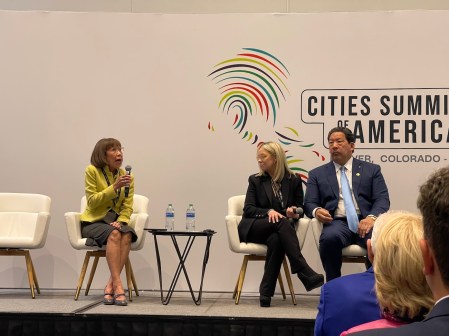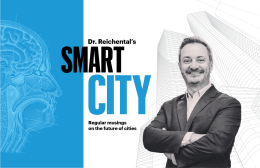Aspiring ‘smart cities’ must engage communities, build partnerships and fail fast

AUSTIN, Texas — City leaders need to engage their citizens, businesses and communities to capitalize on the potential of smart city technologies, according to information technology leaders in city governments and universities.
At the Smart Cities Innovation Summit, South Bend, Indiana, Chief Information Officer Santiago Garces said the city is planning projects that involve the community and address key needs.
But the question that has to be addressed is, “How do you make smart city projects not be things that you do to the community, but things you do with the community?”
In South Bend, Garces said the key was to keep the community informed of projects the city was working on — instead of just working on what the city expects cities to care about. And establishing relationships with universities in the community to partner on those initiatives is helpful, he said.
He pointed to a 2011 BusinessWeek list that identified South Bend as one of the U.S.’s top 10 dying cities, and how that inspired city leaders to find partnerships with universities — through initiatives like the MetroLab Network — and to use those partnerships to help cities take small risks that could result in big returns on projects.
“I think there’s this recognition in the city that if you don’t change, if you’re not willing to experiment and try things, you get left behind,” Garces said. “It’s difficult to innovate in the open.”
The engagement with universities can help cities have good collaboration stories that they can push out through local media, and highlight during public meetings and to executives.
Jen Duthie, the director of the University of Texas at Austin’s Network Modeling Center within the Center for Transportation, agreed with Garces that partnerships with universities can help soften that risk gap for cities, and meet university goals as well.
“We want to come up with projects that provide clear benefits to the city, but also meet the university’s mission by facilitating research,” Duthie said.
Dan Hoffman, Montgomery County, Maryland’s chief innovation officer, concurred, and said that in addition to successful partnerships, it’s important to have executive buy-in. In his county, Hoffman said the county executives help to support and inspire a culture of risk-taking, and learning from occasional project failure.
“If I’m not failing some of the time, I’m not trying hard enough,” Hoffman said. “A county official allowing one member of his team to take that, and run with it, is necessary.”
Contact the reporter who wrote this story at jake.williams@statescoop.com and follow him on Twitter @JakeWilliamsDC.





